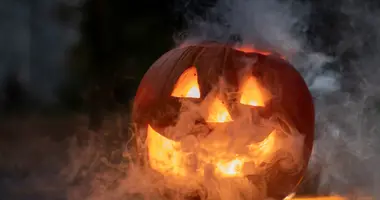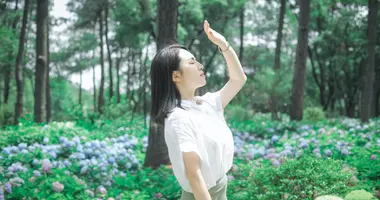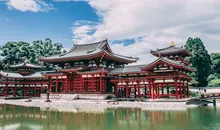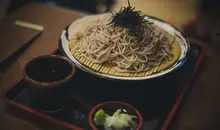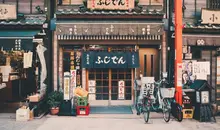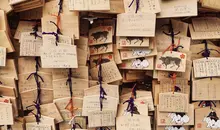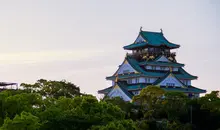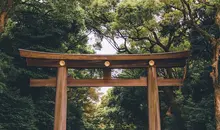Ema Votive Plaques: A Window into Japanese Culture and Spirituality
- Published on : 12/04/2024
- by : Japan Experience
- Youtube
Ema votive plaques are small wooden tablets that play a significant role in Japanese religious and cultural practices. These colorful, rectangular plaques can be found hanging at Shinto shrines and Buddhist temples throughout Japan. Visitors write their wishes, prayers, or expressions of gratitude on these tablets and offer them to the enshrined deities. Ema serve as a tangible connection between the earthly and spiritual realms, allowing people to externalize their hopes and concerns. This longstanding tradition offers a unique glimpse into the hearts and minds of the Japanese people, reflecting both individual aspirations and broader societal trends.
The origins and evolution of ema in Japanese tradition
The history of ema dates back to ancient Japan, with their origins rooted in Shinto practices. The word "ema" literally translates to "picture horse," which reflects their early purpose. In ancient times, horses were considered sacred animals and were believed to be the vehicles through which gods traveled to the human world. Wealthy individuals would donate live horses to shrines as offerings to the gods, especially during times of drought or flooding.
However, as not everyone could afford to donate actual horses, people began offering wooden or clay figurines of horses instead. Over time, this practice evolved into offering wooden plaques with painted horse images. The earliest known ema dates back to the Nara period (710-794). During the Kamakura period (1185-1333), the custom spread to Buddhist temples as well.
As the tradition developed, the imagery on ema expanded beyond horses. During the Muromachi period (1336-1573), shrines began displaying ema with various other images, such as foxes at Inari shrines. The Azuchi-Momoyama period (1573-1600) saw the emergence of emado, or "ema halls," where artists could display their work. By the Edo period (1603-1867), it became common for individuals to purchase small plaques to communicate their wishes more conveniently.
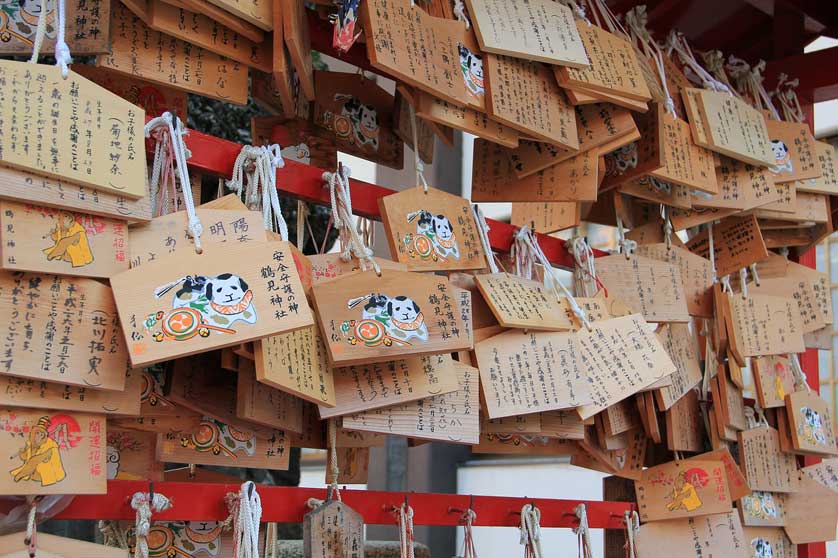
Wooden prayer tablets, or ema are a common sight in Japanese shrines
The symbolism and significance of ema designs
Modern ema come in a wide variety of designs and shapes, each carrying its own symbolism and significance. While the traditional horse image is still common, many ema now feature other animals, particularly those from the 12-year zodiac. The designs often reflect the specific deity or purpose of the shrine or temple where they are sold.
Some common ema designs include:
- Zodiac animals representing the current year
- Symbols associated with specific deities (e.g., foxes for Inari shrines)
- Local landmarks or cultural icons
- Heart-shaped ema for love and relationship prayers
- Academic-themed ema for exam success
The shape of the ema itself is symbolic, typically resembling a miniature shrine roof. This design is believed to provide a "home" for the deity to reside in while receiving the worshipper's prayer. Some shrines and temples offer unique shapes related to their specific focus, such as car-shaped ema at shrines associated with traffic safety.
How to use ema: A guide for visitors to Japanese shrines and temples
Using ema is a simple process that allows visitors to participate in this meaningful Japanese tradition. Here's a step-by-step guide:
- Purchase an ema from the shrine or temple office (juyosho). Prices typically range from 500 to 1000 yen.
- Write your wish or prayer on the back of the ema. You can write in any language, and it's not necessary to include your name or address.
- Optionally, you can draw or decorate the front of the ema if it's blank.
- Hang your ema on the designated racks or frames provided at the shrine or temple.
- Make a small offering in the collection box if you wish.
It's important to approach this practice with respect and sincerity. While taking photos of ema displays is generally acceptable, avoid reading others' wishes, as this is considered impolite. If you prefer, you can also take your ema home as a souvenir and personal reminder of your wish.
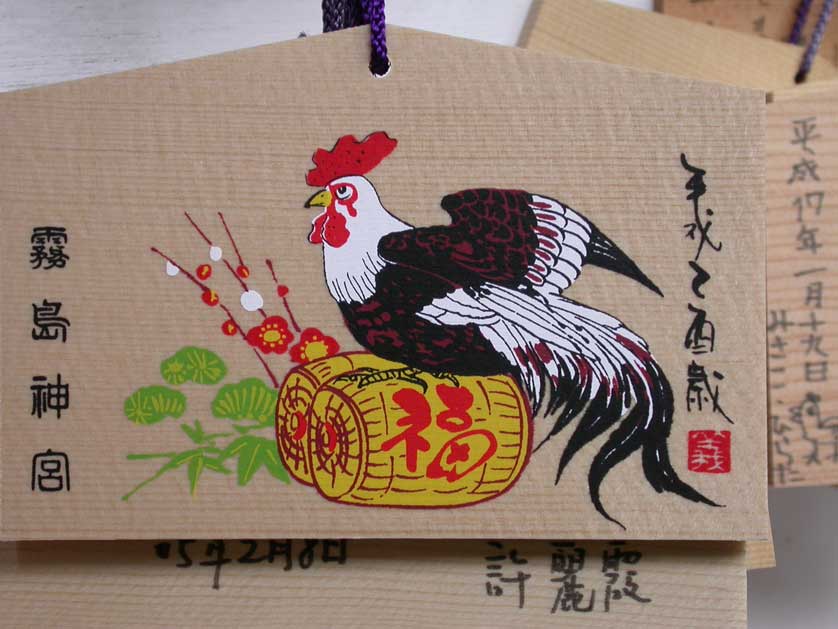
Wooden prayer tablets, ema, commonly depict the zodiac animal of the year - here the rooster in 2017.
The role of ema in modern Japanese society
In contemporary Japan, ema continue to play a significant role in both religious and cultural practices. They serve as a bridge between traditional spirituality and modern life, allowing people to express their hopes and concerns in a tangible way. Ema are particularly popular during important life events and transitions, such as:
- New Year's visits to shrines (hatsumode)
- Before important exams or job interviews
- When seeking love or relationship success
- For health and well-being of family members
- During pregnancy or when hoping to conceive
The practice of using ema has also adapted to modern technology. Some shrines now offer digital ema services, allowing people to submit their wishes online. This has become particularly relevant during the COVID-19 pandemic, enabling worshippers to maintain their spiritual practices while observing social distancing measures.
Ema as a reflection of societal concerns: From personal wishes to global issues
Ema serve as a fascinating window into the collective consciousness of Japanese society. The wishes and prayers written on these plaques often reflect not only personal concerns but also broader societal issues and global events. Some common themes found on ema include:
- Academic success and career advancement
- Health and longevity, particularly in an aging society
- Economic prosperity and business success
- Finding love and maintaining relationships
- Safety and protection from natural disasters
In recent years, ema have also been used to express wishes related to global concerns. For example, during the COVID-19 pandemic, many ema carried prayers for an end to the outbreak and for the health and safety of frontline workers. Similarly, ema addressing climate change, world peace, and other international issues have become more common, reflecting Japan's increasing global awareness.
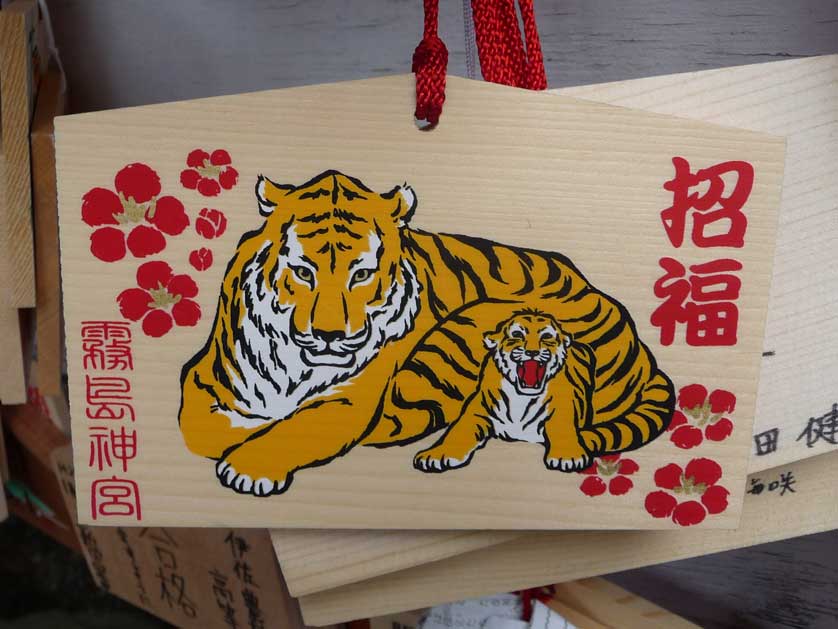
In the year of the tiger, in 2022, more images of tigers adorn ema hanging outside shrines in Japan than real tigers survive in India. People born in 'tiger' years are both sensitive and stubborn, courageous and showing great sympathy.
The cultural importance of ema in Japan's religious landscape
Ema play a crucial role in Japan's unique religious landscape, which is characterized by a blend of Shinto and Buddhist traditions. Unlike some other religious practices, the use of ema is accessible to everyone, regardless of their level of religious devotion or spiritual beliefs. This inclusivity has contributed to the enduring popularity of ema across generations.
The practice of offering ema also reflects the Japanese concept of "this-worldly benefits" (genze riyaku), where religious practices are often focused on achieving practical, everyday goals rather than solely spiritual enlightenment. This pragmatic approach to spirituality is deeply ingrained in Japanese culture and is evident in the wide range of wishes expressed on ema.
Furthermore, ema serve as a form of folk art, with many shrines and temples commissioning local artists to create unique designs. This has helped preserve traditional artistic techniques and provides a platform for contemporary artists to engage with spiritual themes.

A cluster of ema at Kirishima Jingu, Kagoshima Prefecture, Kyushu.
Ema and tourism: Experiencing Japanese spirituality as a visitor
For visitors to Japan, participating in the ema tradition offers a unique way to engage with Japanese culture and spirituality. Many shrines and temples welcome foreign visitors to purchase and dedicate ema, often providing instructions in multiple languages.
Collecting ema as souvenirs has also become popular among tourists, with many shrines offering beautifully designed plaques that serve as memorable keepsakes. Some popular tourist destinations even offer ema featuring anime characters or local mascots, blending traditional practices with popular culture.
When visiting Japanese gardens or historic sites, look for ema displays, which often provide insight into local customs and beliefs. Many books on Japanese culture also discuss the significance of ema, offering deeper understanding for interested visitors.
By engaging with the ema tradition, visitors can gain a deeper appreciation for the intricate relationship between spirituality, art, and daily life in Japan. Whether you choose to offer your own wish or simply admire the heartfelt messages of others, ema provide a unique glimpse into the soul of Japanese culture.

